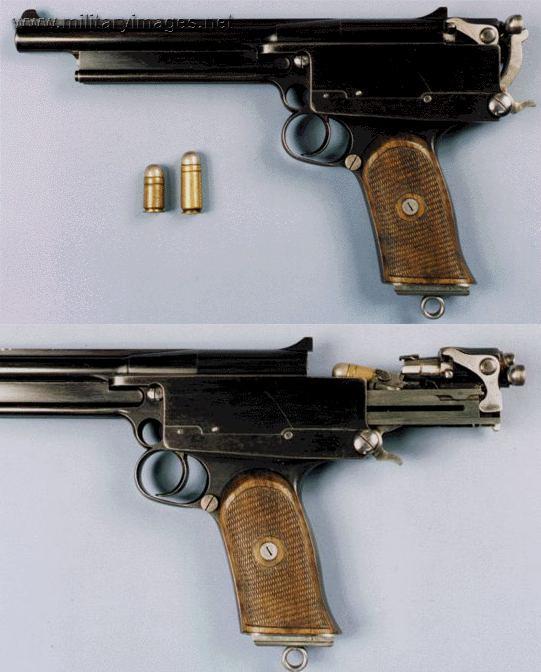The Mars pistol was a development of the turn of the century that would really be more at home in a Jules Verne novel… than in the real world. It was a massive handgun, ridiculously powerful, and marvelously complex… the first production prototype made by Webley in 1898 and production ceasing by 1907.

To put the gun’s physical size in context, consider the numerical data. The Mars is 25% heavier and 30% larger than the Colt 1911, and fires a very similar projectile at 50% higher velocity…

The Mars is one of the few long-recoil action firearms designed and built, and this choice of action contributes to its complexity. Hugh Gabbett-Fairfax, its inventor, was dedicated to the long-recoil system because it offered a high margin of safety for his very powerful cartridge. The idea of a long recoil system is that the bolt and barrel remain locked together as the whole system recoils backwards, and only unlock when fully rearward… The long locked time means that the bullet will have left the barrel and pressure will have dropped a great deal before the system opens, thus protecting the shooter.

It is worth comparing the Mars to the only reasonably successful long recoil pistol, which was the Frommer 1912. In the Frommer, bolt and barrel travel back together, and the bolt is held at it rearward position while the barrel returns forwards. The empty case is ejected as the barrel pulls off it, and when the barrel is fully home is trips a release to allow the bolt to come forward, stripping a new cartridge from the magazine as it does so. The Mars prototypes initially functioned this way (including the use of a rotating bolt, with 4 lugs in the case of the Mars), but had reliability problems. The travel distance of the moving parts… combined with the significant recoil of firing tended to bounce things around and led to feeding failures. The solution was twofold. First, the normal magazine was replaced by a cartridge elevator which would pull a round backwards out of the magazine during recoil and then lift is up into the path of the bolt. Secondly, the automatic bolt release was replaced by a mechanism which held the bolt open until the shooter released the trigger.

So,if one was to press the trigger and hold it back, the Mars would fire and lock open with a new cartridge lifted and ready for chambering, but the bolt would not be released to slam forward and lock until the trigger was released. This led to one of the perennial complaints about the gun in military trials; it had a very heavy trigger pull. In addition, this mechanism was spring loaded until late in the production run, and it was possible for the bolt to jump over the catch and follow the barrel home, which was responsible for many of the feeding problems encountered in testing. The mechanism was progressively improved, and by the final few guns made it was made wholly of positive mechanical cams and the problem was eliminated.
Ian’s video: [14:21] https://youtu.be/RBKqvLpxpU4?si=
Read more: https://www.forgottenweapons.com/gabbet-fairfax-mars-automatic-pistol/

